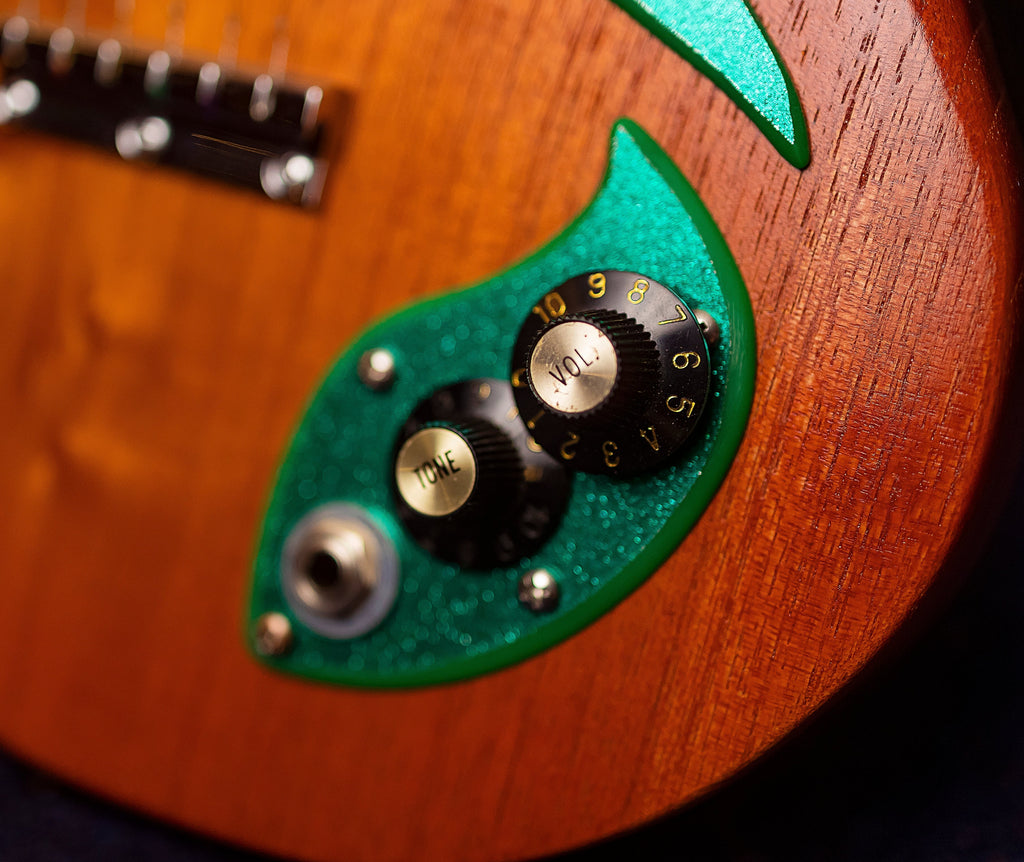
Design Symposium Article | Written by Bowie Dunne

How a Guitar gets its Soul - Design Symposium
Written by Bowie Dunne
Edited by Elena Josipovic
We would like to pay our respects to both the Turrbul People and the Yuggera People, who are the Traditional Custodians of the land on which we work, live and create. We recognize their role in caring for and maintaining Country over many millennia. Not too far from the land on which the Design Symposium was held, for many years, the Traditional Custodians held important ceremonies and dances. As we investigate how a guitar gets its soul, may we remember and acknowledge this history. May we recognise the rich cultural heritage of this country and appreciate the traditions based on oral histories, shared beliefs and values. Let us remember the thousands of years of storytelling that came before us, which are alive and well. To the elders, past, present and emerging, we pay our respects.
In artisan’s Melbourne Street Studio, a panel of esteemed guests, Sean Hancock, Dave Leddin, Tim Brennan, Andrew Hopkins, Zoe Middleton, Dana Gherman, Campbell Messer and Blair Thompson, joined by director of Szephyr Guitars, Steve Szell, gathered for artisan’s Design Symposium. Szell posed a question to the panel: “How does a guitar get its soul?”. The subsequent discussions explored the nuances of this question. Those in attendance were witness to storytelling that detailed the conception of a guitar and the sound aesthetics of individual musicians.

Before the event, I sat down with Steve Szell, who not only organised the Symposium but its accompanying exhibition at artisan, to chat about his personal experience with the world of guitar building and his motivation behind the event.
There are many opinions within the guitar-making world about which material lends itself to making the best guitar. Steve explained during the conversation that certain types of wood can make or break the tone of the instrument. Brazilian rosewood has become a highly desirable, rare and regulated tonewood. This wood is expensive to acquire and create with. Szell takes “issue with the idea that a guitar has to be built a certain way with a certain material to be high-end or high quality”. He emphasised the plethora of material available in this country. There is a certain process of discovery that comes from all aspects of hand-crafting a guitar, starting with choosing what wood to repurpose. Using his masters degree in architecture, Szell passionately pointed out the similarities between his disciplinary background and the art of hand-crafting a guitar from a repurposed piece of timber. Szell noted that “materials directly influence the atmosphere and experience of the space in architecture”. Much like the experience of a guitar, the microtonal changes are influenced by a complex system that unites the musician with the qualities of their instrument’s timber. Szell emphasised that much like architecture, there is an abundance of sustainable resources readily available to make high-quality and musically beautiful guitars.
The conversation at the Symposium began with a panel of luthiers. Discussions ensued about their respective experiences and knowledge about the advantages of vintage versus new-age components and what that means for the feeling of the guitar. Tim Brennen interjected with “at a certain point in the process, feel overrides”. This idea brought an interesting perspective to the discussions about the technical process of guitar-making. The relationship between person and machine rests wholly in the tactile connection, which emphasises the microtonal changes in sound. The amount of pressure the individual decides to use on the strings of the guitar influences the sound on a microscopic technical level. Tactility became a bridge between the luthiers and the musicians, in terms of sound aesthetic and the relationship to materiality.
The luthiers and musicians then joined together in conversation to discuss the similarities between building and playing. The guest speakers all shared an intense passion that fuelled the lively and engaging conversation. The makers and musicians talked at length about the positives and negatives of vintage and new guitars, discussing sound quality and design. The speakers agreed that a vintage guitar carried with it a history that makes for an easier connection between player and instrument. Dana Gherman put it beautifully: “the connection between the two of us, the guitar and me, gives it its soul”. Dana was met with a resounding murmur of agreement as many in the room and on stage reflected upon their own individual connections with their respective instruments.

To close the event with an answer to Szell’s original question, the musicians brought their instruments out for a live demonstration. The musicians talked about their personal specifications for sound and tone post-construction of the guitar. Tools such as amps and pedals were layered to create specific sound aesthetics and tone. Each artist had an individual idea of what sound was most desirable and thus, they explained how they use their tools to achieve that. Campbell Messer added to the conversation with his purposefully limited set up, “limitations mean that you have to work with what you’ve got”. For Campbell, it seems that to understand the full capabilities of your instrument, it must exist with its cleanest tone first. Dana, Tim and Campbell discussed the subtlety of a clean tone, while Zoe Middleton, Blair Thompson and Steve explained how they each utilise pedals, amps, fuzz and reverb to create walls of sound. All of these different approaches to sound solidified the importance of individuality and the deeply personal connection between artist and instrument.
By the end of the Symposium, many walked away with a deeper understanding and appreciation for all things guitar, from creation, design, materiality and sound aesthetic. Each component of a guitar tells a story: tonewoods, repurposed pickups, post-construction pedals and amps, and the people lovingly crafting a connection with the instrument. Whilst Szell’s question appears deceptively simple, a guitar’s soul is constituted by an amalgamation of everything discussed throughout the Symposium. A guitar’s soul is created by the union of technicalities, history, individuality, and love.

Special thanks to Steve Szell for contributing to and organising the Design Symposium. Guest Speakers include; Sean Hancock, Dave Leddin, Tim Brennan, Andrew Hopkins, Zoe Middleton, Dana Gherman, Campbell Messer and Blair Thompson.
DOWNLOAD ARTICLE


